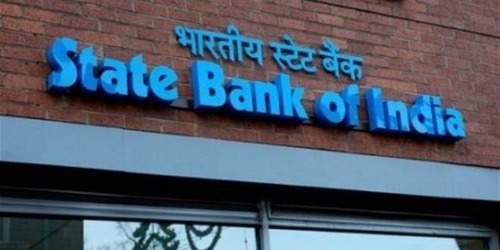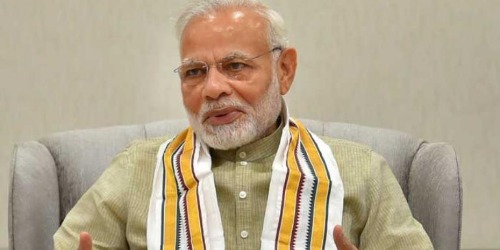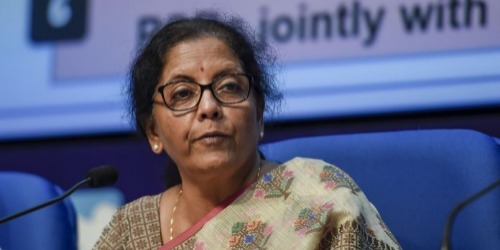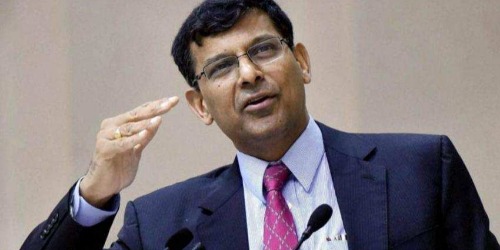SBI have come out with repo-linked home loans

The State Bank of India is the first bank to have come out with a repo-linked home loan scheme after the Reserve Bank of India (RBI) made it mandatory for all banks to offer external benchmark-linked floating loan products from October 1.
SBI had introduced floating rate home loan products on July 1. However, it was discontinued and re-launched after few modifications to comply with latest regulatory guidelines.
As this is a new product targeted at increasing the transparency in the interest rate fixing mechanism, as a borrower you must know what all will change from the next month. The new home loan offering is timely as it synchronises well with festivities, the time of the year when higher number of people prefer buying houses.
Setting the industry trend
The SBI being the largest mortgage lender in the country has set the trend. Most of other banks are expected to follow suit. The product will give you an idea about how the banking system will respond to the RBI mandate to link their floating loan rates to one of the external benchmarks published by Financial Benchmarks India Private Ltd (FBIL).
Spread over external benchmark
The most crucial part to know about the new loan is the spread that a lender may charge over the external benchmark. SBI has decided to keep the spread at 2.65 per cent. Currently, the repo rate is 5.40 per cent. So, the SBI will have external benchmark rate (EBR) of 8.05 per cent.
Interest rate for borrowers
If you are a male salaried borrower taking a floating rate term loan up to Rs 30 lakh for a home, you will have to pay an effective interest rate of 8.20 per cent, 0.15 per cent more than EBR of 8.05 per cent. In case of a female borrower, the bank is giving a concession of 0.05 per cent. As a result, female borrower will get the same loan at 8.15 per cent. Additional 0.10 rate will be charged if your loan to value (LTV) goes above 80 per cent. The maximum LTV allowed is 90 per cent.
For loans between Rs 30 lakh to Rs 75 lakh SBI is charging Rs 0.40% over the EBR. So a salaried male borrower will get the loan at 8.45% while female borrowers will get it 8.40%.
For the loans above Rs 75 lakh, the bank will charge an interest rate of 8.55 per cent from the salaried male borrower while 8.50 per cent from salaried female borrowers.
For non-salaried borrowers the bank will charge additional 0.15 per cent interest rate. The lender will also charge additional 0.10 per cent from borrowers falling into Risk Grade (RG) 4-6 that is considered riskier.
Repo Rate as the benchmark
SBI has selected repo rate as its external benchmark, which is significant as there were multiple options such as three-month and six-month treasury bills or any other benchmark rate published by FBIL. While many other rates change frequently, repo rates are reviewed (and changed, if required) during bi-monthly meetings of Monetary Policy Committee of the RBI. As the minimum reset period to adjust the lending rate is three months, any change in repo rate will not be immediately passed on to borrowers.
Easier to track future changes in interest rates
Once the spread is decided, it can only be changed after a gap of three years. So, borrowers can easily calculate the changes in their effective interest rates as per the changes in the repo rate. If the repo rate falls by 0.25 per cent, their home loan interest rates will go down by 0.25 per cent by the beginning of the next quarter.
Besides the spread, the bank is also allowed to change the interest rate if the risk profile of a borrower goes through a substantial change, which is unlikely to happen with most of borrowers.
- 0
- Leave a comment
PM Modi announces $150 million line of credit to group of Pacific island nations

Prime Minister Narendra Modi has announced a USD 150 million line of credit to the group of Pacific island nations for undertaking solar, renewable energy and climate related projects based on their requirement.
Modi, who attended the India-Pacific Islands Developing States (PSIDS) Leaders' Meeting, also announced a total allocation of USD 12 million to the member states towards implementation of high impact developmental project in the area of their choice.
The meeting was held here on Tuesday on the sidelines of the 74th session of the UN General Assembly. This is the first time he has met the leaders of the PSIDS on the margins of UNGA in a plurilateral format.
The meeting was attended by the Heads of delegation of Fiji, Republic of Kiribati, Republic of Marshall Islands, Federated States of Micronesia, Republic of Nauru, Republic of Palau, Independent State of Papua New Guinea, The Independent State of Samoa, Solomon Islands, Kingdom of Tonga, Tuvalu and Republic of Vanuatu.
"In the spirit of his fundamental Mantra "Sabka Saath, Sabka Vikas aur Sabka Vishwas (together with all, for the development of all and with the trust of all)," Modi announced allocation of 12 million dollars grant (1 million dollar to each PSIDS) towards implementation of high impact developmental project in the area of their choice.
In addition, a concessional Line of Credit of USD 150 million which can be availed by the PSIDS for undertaking solar, renewable energy and climate related projects based on each country's requirement was announced, according to a press release issued here.
Modi emphasised that India and the PSIDS have shared values and a shared future and he highlighted the need for development policies to be inclusive and sustainable to reduce inequality and contribute to empowerment and improvement of the quality of people's lives.
The press release added that Modi said India is equally committed to tackling the impact of climate change and supports efforts of the PSIDS to achieve their developmental goals through necessary developmental and technical assistance.
Modi underlined the reality of climate change and called for increasing the share of renewable energy in the total energy mix to mitigate many adverse effects of climate change.
He also expressed India's readiness to share its experiences in developing alternate energy. He expressed his satisfaction as many countries from the region have joined the International Solar Alliance and invited others to join this initiative.
Prime Minister Modi also invited Leaders of PSIDS to join the Coalition for Disaster Resilient Infrastructure (CDRI).
The press release said that India's relationship with Pacific Island nations has deepened with the evolution of Act East Policy, resulting in the setting up of the action-oriented Forum for India Pacific Island Cooperation (FIPIC).
The first and second editions of the FIPIC took place in Fiji (2015) and Jaipur (2016).
During the FIPIC Summits the Prime Minister articulated India's desire to be a close partner of the Pacific Island nations and its readiness to work closely to advance their developmental agenda.
The meeting deliberated on wide range of issues, including sharing of development experiences for attainment of SDGs, enhancing cooperation in renewable energy, joining the newly launched Coalition for Disaster Resilient Infrastructure, capacity building, implementation of projects under the India-UN Development Partnership Fund and a roadmap for future India-PSIDS cooperation.
Modi reaffirmed his commitment for providing developmental assistance for capacity building and proposed to depute technical experts to provide training and offered to organise specialized courses also under ITEC programme in priority areas identified by partner countries, including training of diplomats from Pacific Island nations at the Foreign Service Institute.
In the health sector, Modi offered to organise a Jaipur Foot Artificial Limb Fitment Camp in a Pacific regional hub under 'India for Humanity' programme.
With a view to further enhancing people-to-people contact, Modi announced a Distinguished Visitors Programme under which eminent persons from these countries can visit India.
India would also welcome the visit of a Parliamentarian delegation from the PICs to India. To continue High-Level engagement, Modi extended an invitation to all the leaders for the 3rd FIPIC Summit to be held in Port Moresby in first half of 2020.
The leaders of PSIDS welcomed the initiatives proposed by PM Modi to strengthen engagement and cooperation between the two sides and reassured full support from their respective governments.
GST Council to decide on rate cut for automobiles next week, says FM Sitharaman

Amid the worst slowdown in the Indian automobile sector, Finance Minister Nirmala Sitharaman has assured that a decision on GST rate cut for vehicles will be taken soon. Facing its worst decline in sales since 1997-98, the automobile sector has been clamouring for measures to rejuvenate demand.
Sitharaman was addressing the media in Chennai on NDA government completing 100 days of its second term. The Finance Minister also assured that the government is aware of the need to respond to the troubles in the auto sector.
With respect to the auto manufacturers' demand to remove automobiles from the highest bracket under the Goods and Services Tax, FM Sitharaman said that the matter will be taken up by the GST Council in its meeting on September 20.
Sitharaman added that the decline in auto sales is not due to just higher tax rates, but because of change in people's mindset, who prefer cab hailing services like Ola and Uber and public transportation.
The automobile sector saw its worst sales performance in August as it declined 23.5 per cent, the worst in the past two decades. In August 2019, overall sales stood at 18,21,490 units against 23,82,436 units in the same month last year. In absolute volume terms, sales have also fallen on a month-on-month basis since May when 20,86,358 units were sold. Since December 2018, year-on-year monthly decline in sales has been unabated.
For the fiscal so far, passenger vehicle sales has declined by 23.54 percent at 11,09,930 units, commercial vehicles by 19 per cent at 317,061 units and two-wheelers at 15,14,196 units, 14.85 per cent less than last year.
Rupee vs dollar: Rupee logs biggest single-day fall in 2019, loses 97 paise amid weak domestic equities
.png)
Rupee logged its biggest fall in 2019 against the US currency on Tuesday amid weak economic data and negative stock market sentiment. The domestic currency opened lower by 55 paise at 71.95 per dollar versus Friday's close of 71.40. The Indian currency extended its fall in afternoon session declining 97 paise to 72.37 per dollar.The currency had hit its all-time low at 74.48 on October 11, 2018. The currency has fallen 3.54% since the beginning of this year.
Forex traders said the US tariffs on imports from China took effect on Sunday and were followed later by Beijing's retaliation. Following this, the domestic currency was under pressure. Weakness in the market led by announcement of mergers of public sector banks and lower than expected economic data also affected sentiment in currency market today.
On Friday, govt data said GDP growth slipped to 6-year low of 5 per cent as compared to 5.8 per cent in the previous quarter, weighed down by slump in manufacturing output, weak consumer demand and deceleration in private investment.
Expansion in manufacturing sector hit its slowest in 15 months in August as demand and output grew at their weakest pace in a year and cost pressures increased, a private sector survey showed on Monday.
The Nikkei Manufacturing Purchasing Managers' Index, compiled by IHS Markit, declined to 51.4 in August from July's 52.5, its weakest since May 2018. However, it has remained above the 50-mark separating growth from contraction for more than two years.
The rupee had appreciated by 38 paise to close at a two-week high of 71.42 against the US dollar on Friday led by a rally in domestic equities and renewed hopes of the US-China trade talks.
The forex market was closed on Monday on account of Ganesh Chaturthi. Foreign institutional investors (FIIs) remained net buyers in the capital market, putting in Rs 1,162.95 crore on Friday, provisional data with the exchanges showed.
The dollar index, which gauges the greenback's strength against a basket of six currencies, inched up 0.37 per cent to 99.28.
Meanwhile, Sensex and Nifty ended in the red post announcement of mergers for public sector banks by the Modi government and lower than expected economic data. While Sensex closed 769 points or 2.06 per cent lower at 36,562 , Nifty fell 225 points or 2.04 per cent to 10,797.90.
Raghuram Rajan issues warning alert for Modi govt on economy

Former RBI Governor Raghuram Rajan has said the economic slowdown in India is "very worrisome" and has called for a fresh look at the way GDP is being calculated.
"There are a variety of growth projections from the private sector analysts, many of which are perhaps significantly below government projections and I think certainly the slowdown in the economy is something that is very worrisome," Rajan told CNBC TV18. The Monetary Policy Committee recently lowered its growth forecast for FY20 to 6.9 per cent from 7 per cent in the June policy.
Rajan also drew attention to former chief economic advisor Arvind Subramanian's research paper published at Harvard University that claimed that India's GDP growth figure was overstated by about 2.5 percentage points per year in the post-2011 period.
In other words, the actual growth rate is likely to have been a very tepid 3.5-5.5 per cent against a reported average growth of 6.9 per cent between 2011 and 2016. "We need a fresh look from an independent group of experts at the way we compute GDP and make sure that we are not in a sense having GDP numbers that mislead and cause the wrong kinds of policy actions," Rajan said.
This is not the first time Rajan has expressed doubts about India's economic data after the government restructured the GDP methodology. He told India Today TV in March that India's tinkering with lead economic indicators and suppression of discomforting economic data is prompting global economists to plan an independent index for the country. "Some people are developing a Li Kequiang Index for India because they are no longer paying attention to the GDP numbers," he explained.
The Li Keqiang Index was created by The Economist and named after a former head of China's Liaoning province who allegedly said he did not trust government statistics and maintained his own index of broad industrial indicators that couldn't be easily fudged such as electricity consumption and railway volume.
In addition, Rajan believes that "a fresh set of reforms" are now needed to boost the economy and energise the private sector to invest. He added it was imperative to fix immediate problems such as those ailing the power sector and the non-bank financial sector post-haste and "not in the next six months" in order to propel India by the 2-3 per cent faster growth that it needs.
At a recent meeting with Finance Minister Nirmala Sitharaman, India Inc asked the government for a 'quick fix' stimulus package to kick-start the investment cycle. However, Rajan opines that sops and stimulus of any kind "are not going to be that useful in the longer-term, especially given the very tight fiscal situation" and warned that one-off programmes will not amount to a comprehensive reform agenda for the economy. "This is what we need today and I really hope we put our best minds to think about this because absent that my sense is that we are in for not so good times," he added.


